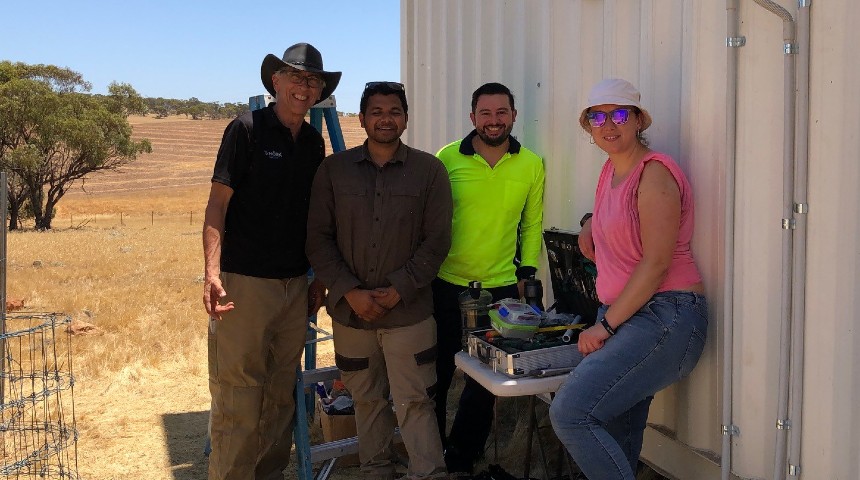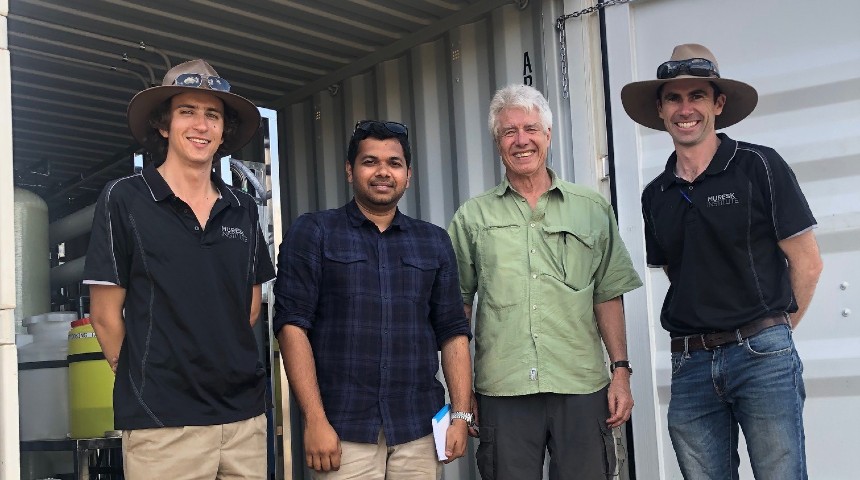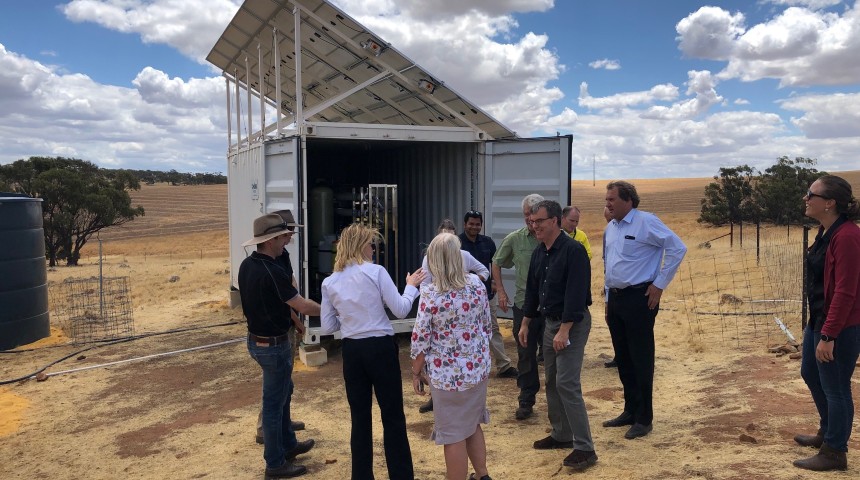
Murdoch researchers are helping WA farmers and miners to secure essential water supplies, while reducing their reliance on Perth’s water stocks, by developing small-scale onsite desalination plants.
More than 100,000 households, farmers, miners and other enterprises are supplied water by the iconic Goldfields and Agricultural Region Water Supply Scheme (GAWS). Consisting of 9,601 kilometres of water mains, it is the largest scheme in WA, beginning from Mundaring Weir in the Perth hills to Kalgoorlie.But the cost of supplying Perth water to small, widely dispersed users is continuing to increase, mainly due to maintenance of ageing infrastructure (some over 100 years old), combined with the need to increase Perth supply by treating impaired water sources (i.e. seawater desalination and wastewater reuse).
As it currently stands, the cost of replacement and refurbishment of the GAWS reticulation pipes is estimated at $1.5-3.0 billion with a timeline between 20 to 30 years.
To reduce reliance on the GAWS scheme water, Murdoch University in collaboration with the Water Corporation and Wheatbelt Development Commission, have identified cost-effective opportunities through a broad research program.
Professor of Desalination and Water Treatment at Murdoch University, Wendell Ela, PhD, said that the research facilitates diversifying regional water supply sources, identifying attractive self-supply options for farmers and small regional communities, and encouraging the maximal uptake of local water supply options by farms and regional communities.
“One of these findings includes that the freshwater resources of the region are only rudimentarily utilised, and that most areas of the Wheatbelt are underlain by substantial, accessible brackish and saline groundwater resources.”

Murdoch researchers, mainly in Environmental Engineering, are now leading research on the choice and implementation of small-scale, on-farm desalination plants to inform understanding of their costs, equipment requirements, longevity, and limitations across the range of conditions prevalent in the region.
“A critical outcome is the provision of stakeholder access to the technologies, to garner feedback, motivate adoption, and establish links between vendors and adopters. Providing that information is a core, early need,” said Professor Ela.
The first of a proposed series of small-scale, remote region, desalination plants was commissioned in late January at the Muresk Institute near Northam, WA. The system is entirely driven by solar energy and specifically designed for minimum maintenance as it delivers livestock drinking water and specialty crop irrigation water.
“The purpose of the desalination plants is to develop an understanding on how these relatively new types of small-scale plants operate in the challenging conditions of on-farm and remote community installation,” said Professor Ela.
“They are implemented to treat the unusable brackish groundwater into useable water for a variety of non-potable farm purposes.”A second plant is being designed for installation later this year, which will treat discharge water from the farm’s piggery for subsequent reuse in the piggery and adjacent livestock agricultural activities.
“Additional systems and trials are being proposed across the range of conditions and users of the GAWS region over the next four to five years to expand and build on the experience gained from the early system deployments.”

Minister of Water, Hon. Dave Kelly, attended an impromptu visit to view the project in January. The visit was then highlighted in a brief to the Western Australian Parliament soon after, indicating the importance which the WA state government has put on securing more sustainable water supplies for rural WA’s growth and health.
There will be an ‘official’ opening event later this year hosted by the Wheatbelt Development Commission and Water Corporation.